Honoring and Preserving a Cold War Legacy
When passing through the idyllic and peaceful countryside around Lumberton, New Jersey, one would never expect to come across a fearsome relic of the Cold War. Yet, until recently, just outside of town, were the remains of a Nike missile battery built in 1956 and designated with the catchy name PH-23/25.
In the 1950’s and 60’s the army built these batteries around major cities armed with Nike surface-to-air missiles to defend them against Soviet bombers. The name PH23/25 meant that it intended to defend Philadelphia (PH). The numbers indicated that it was a double battery which functioned as two separate missile bases in one place.*
As military technology advanced, these Nike missile batteries became obsolete and most were torn down. This one survived after it was decommissioned in 1974 because it was adapted for other uses.
I’ve lived near this battery for over 30 years and always meant to photograph it one day. That day came recently when I heard that the site was slated for demolition to make way for a new local government building and a housing development.
By the time I found out about the demolition, only one of the three sections was somewhat untouched. Fortunately, it was the most interesting section, the command and control center with the remains of radar towers that many have mistakenly thought were missile silos.
This old and deteriorating base might have been a local eyesore, but it was also an important physical remnant of our nation’s history. It reminded us that, not long ago, we faced what could have been a devastating nuclear war with the Soviet Union. Growing up during the Cold War, I remember that underlying fear of a nuclear conflict.
These missile defenses, while formidable looking, probably would have done little to stop squadrons of enemy bombers or rockets with atomic warheads. When these batteries were active, it was a time when our nation, and our world, was vulnerable to unimaginable destruction.
Nike missile batteries have a place in 20th century history as some of the last defensive fortifications in the United States against an invading enemy. Just like the coastal canon batteries that were built in the 18th and 19th centuries to defend against an attack from the sea, these missile batteries were built to counter an attack from the sky.
Nike Missile Battery Radar Towers
The radar towers were often mistaken for old missile silos. They are not only the most military and unusual looking structures on the site, they are also artistic and iconic shapes.

Nike Missile Battery Radar Section by Richard Lewis 2015
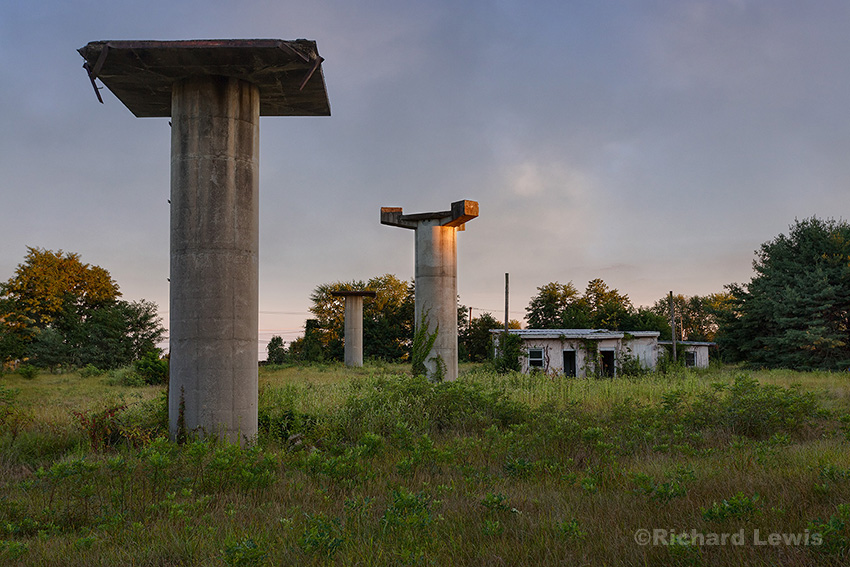
Nike Missile Base Radar Towers by Richard Lewis 2015
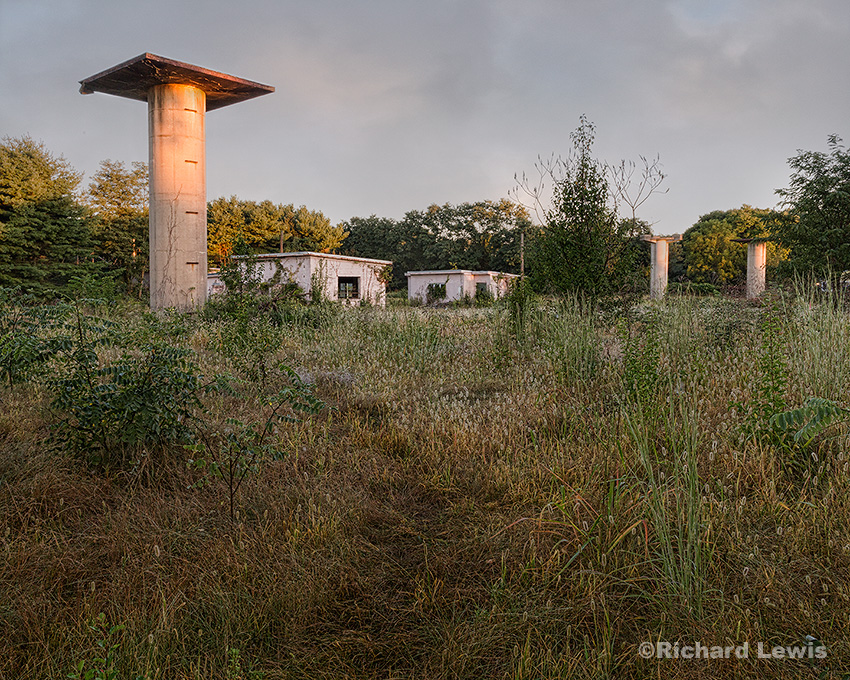
Nike Missile Battery by Richard Lewis 2015
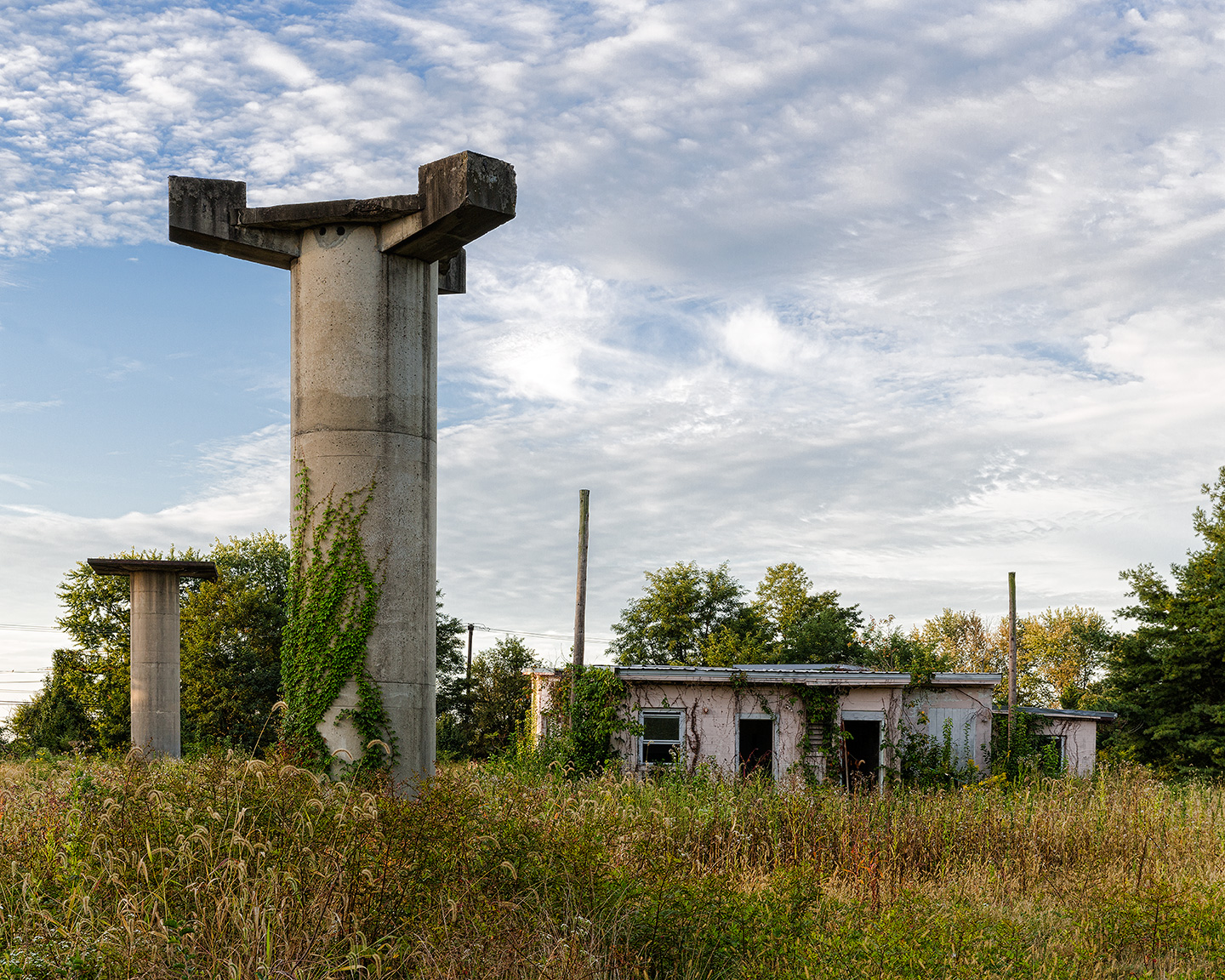
Radar Towers and Control Building by Richard Lewis 2015
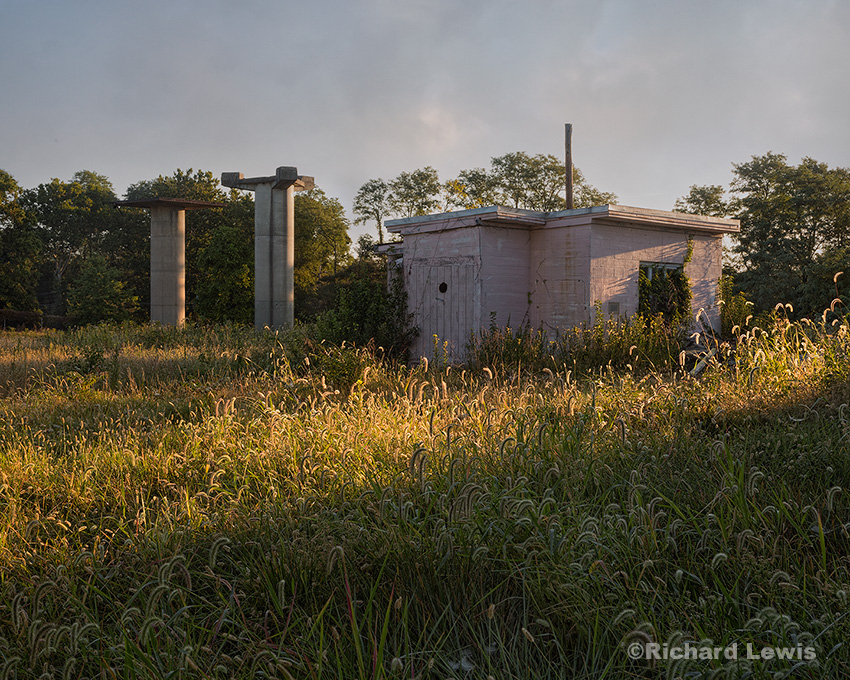
Nike Missile Base Radar Towers and Old Control Building by Richard Lewis 2015
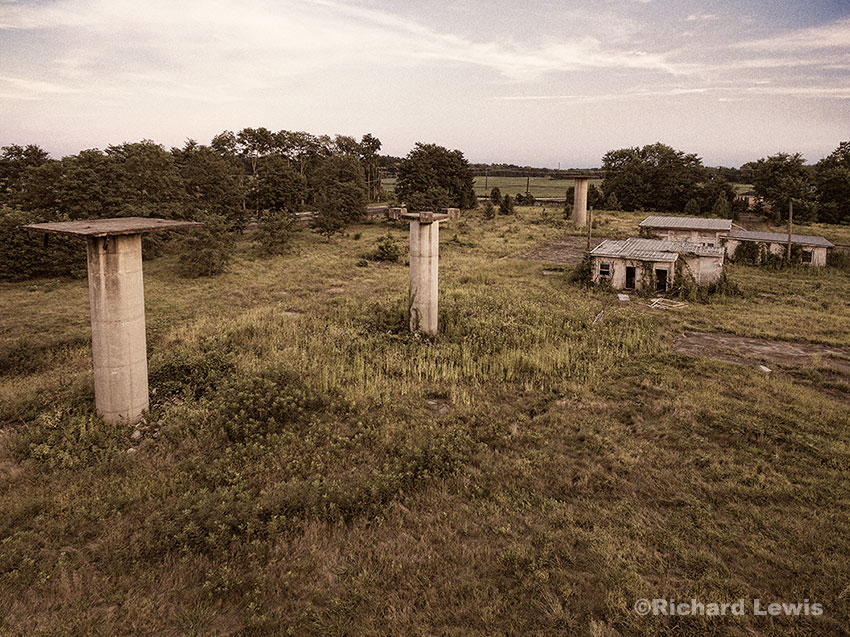
Nike Missile Battery Aerial View from a drone by Richard Lewis 2015

Nike Missile Battery Radar Towers by Richard Lewis 2015
The following three photographs were made just after the final demolition started. In the background the trees have been removed and the barracks and administrative areas is visible from the radar section and visa versa.
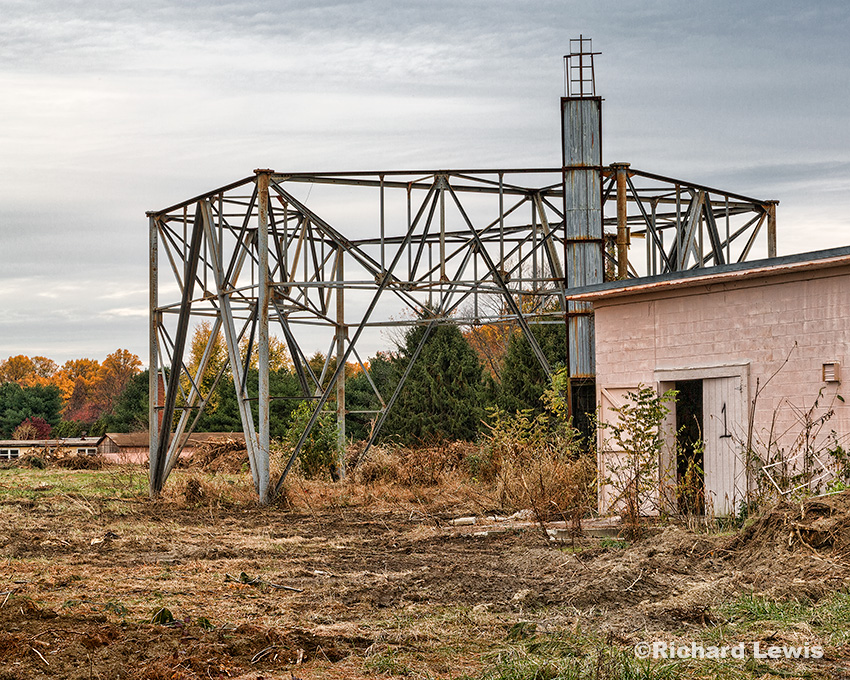
Nike Battery PH23/25 HIPAR Radar Tower by Richard Lewis 2015
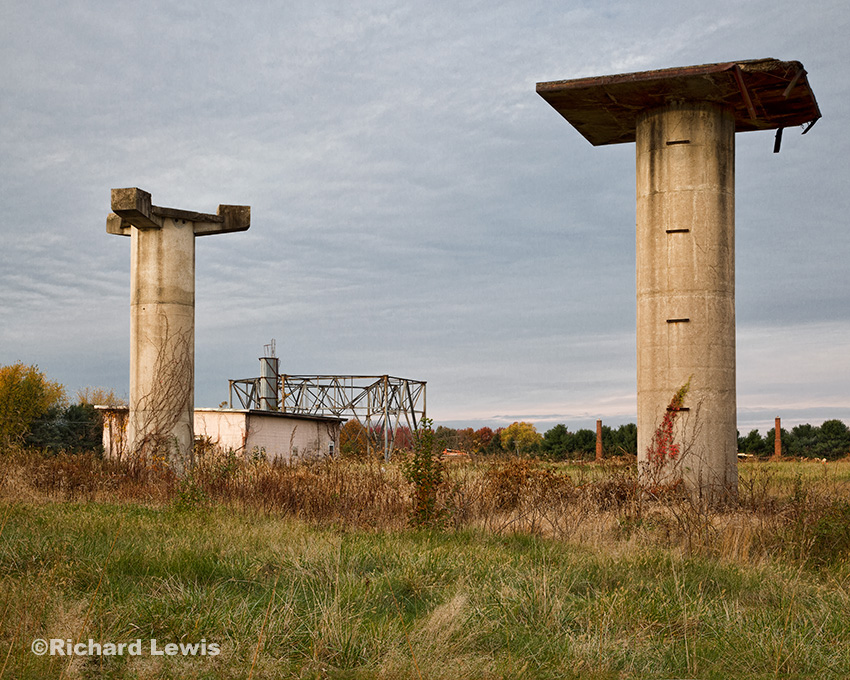
Nike Battery PH23/25 Radar Towers by Richard Lewis 2015
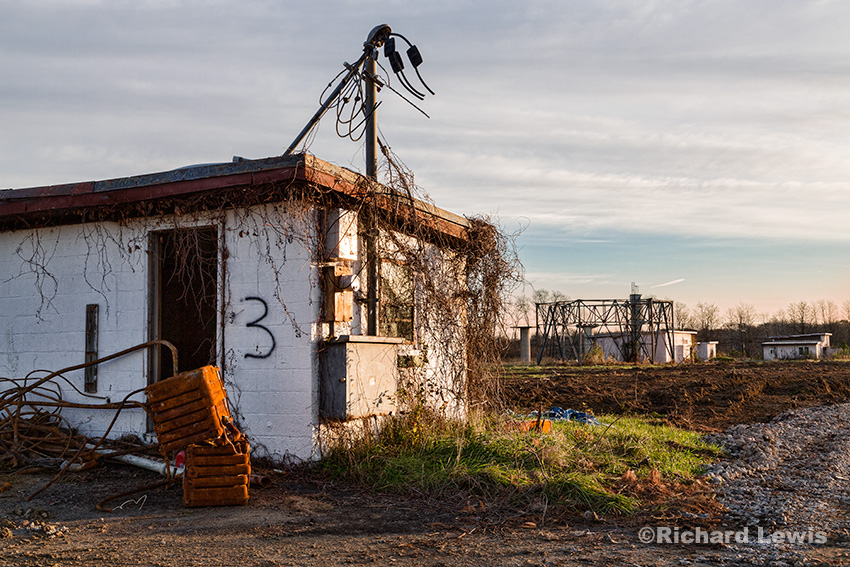
View of Radar Command and Control from Administrative Area by Richard Lewis 2015
Nike Missile Battery Grounds and Buildings
The overgrown landscape and dilapidated buildings help date this site and illustrate what happens to places that are abandoned. Most of the community may have looked at this as an eyesore, but I can’t help seeing a place to merge history and art.
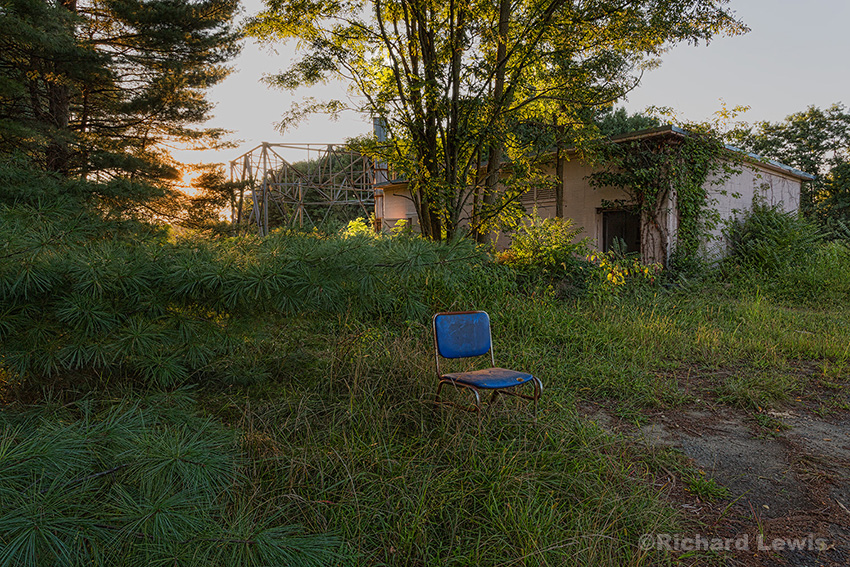
Overgrown Building with HIPAR Radar Structure by Richard Lewis 2015
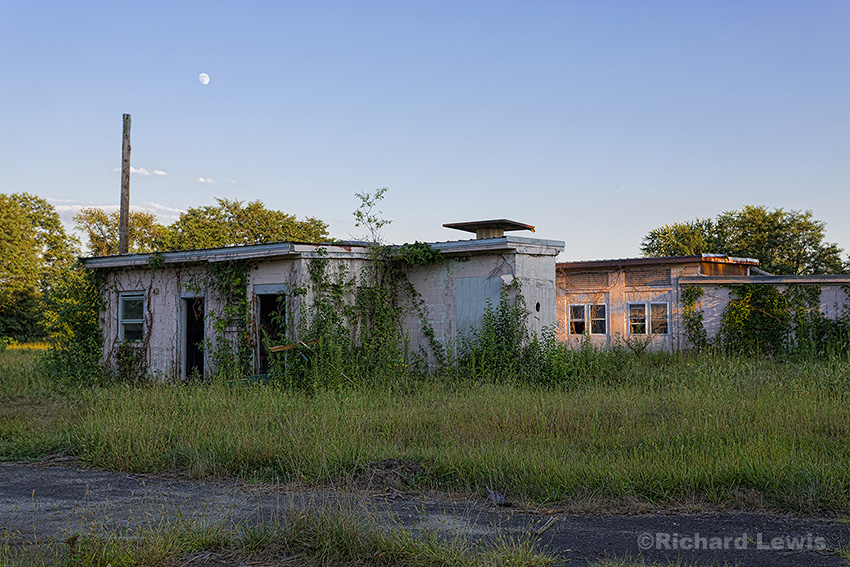
Nike Missile Battery Control Buildings and Moon by Richard Lewis 2015
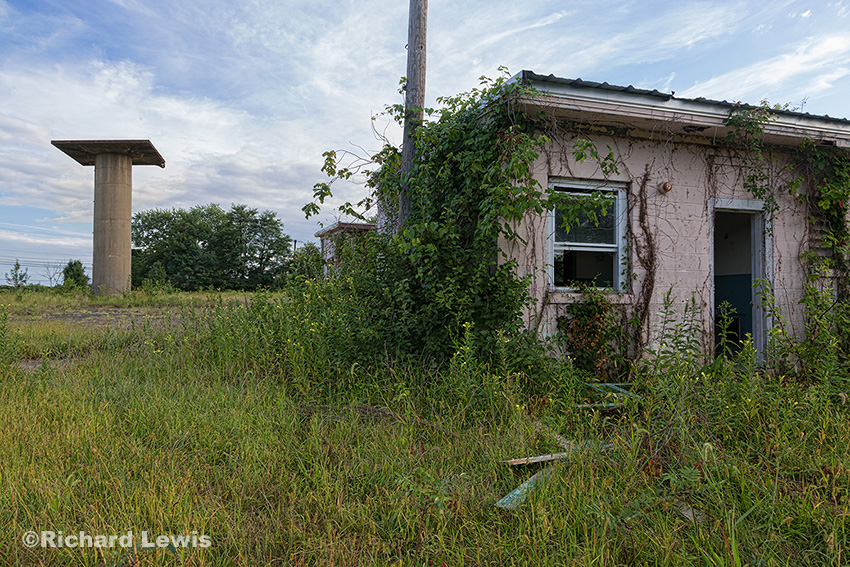
PH23/25 Old Control Building and Radar Tower by Richard Lewis 2015
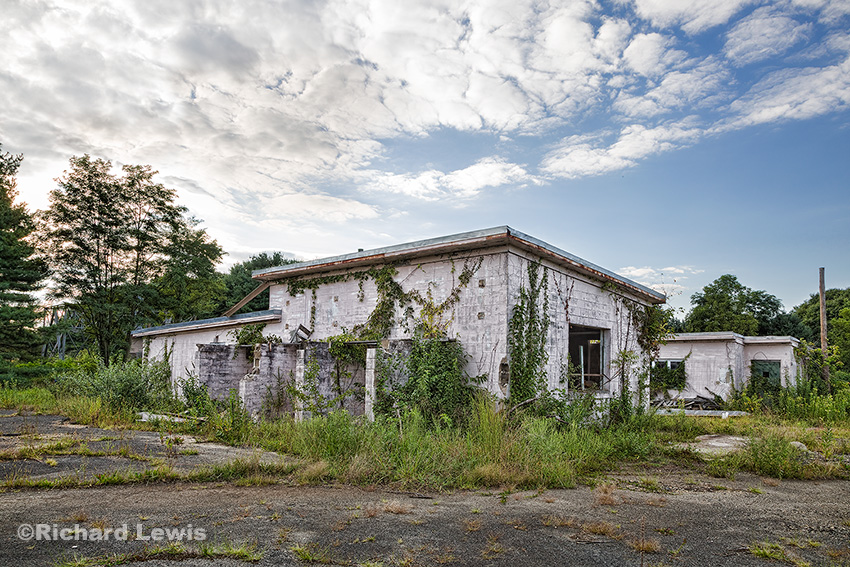
Nike Missile Battery Buildings by Richard Lewis 2015
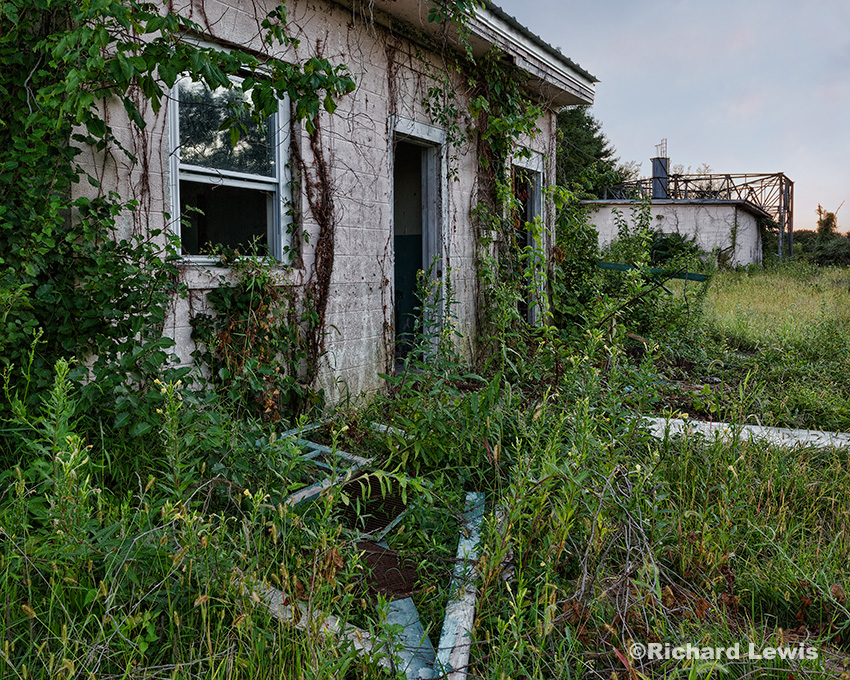
Nike Missile Battery Radar Control Area by Richard Lewis 2015
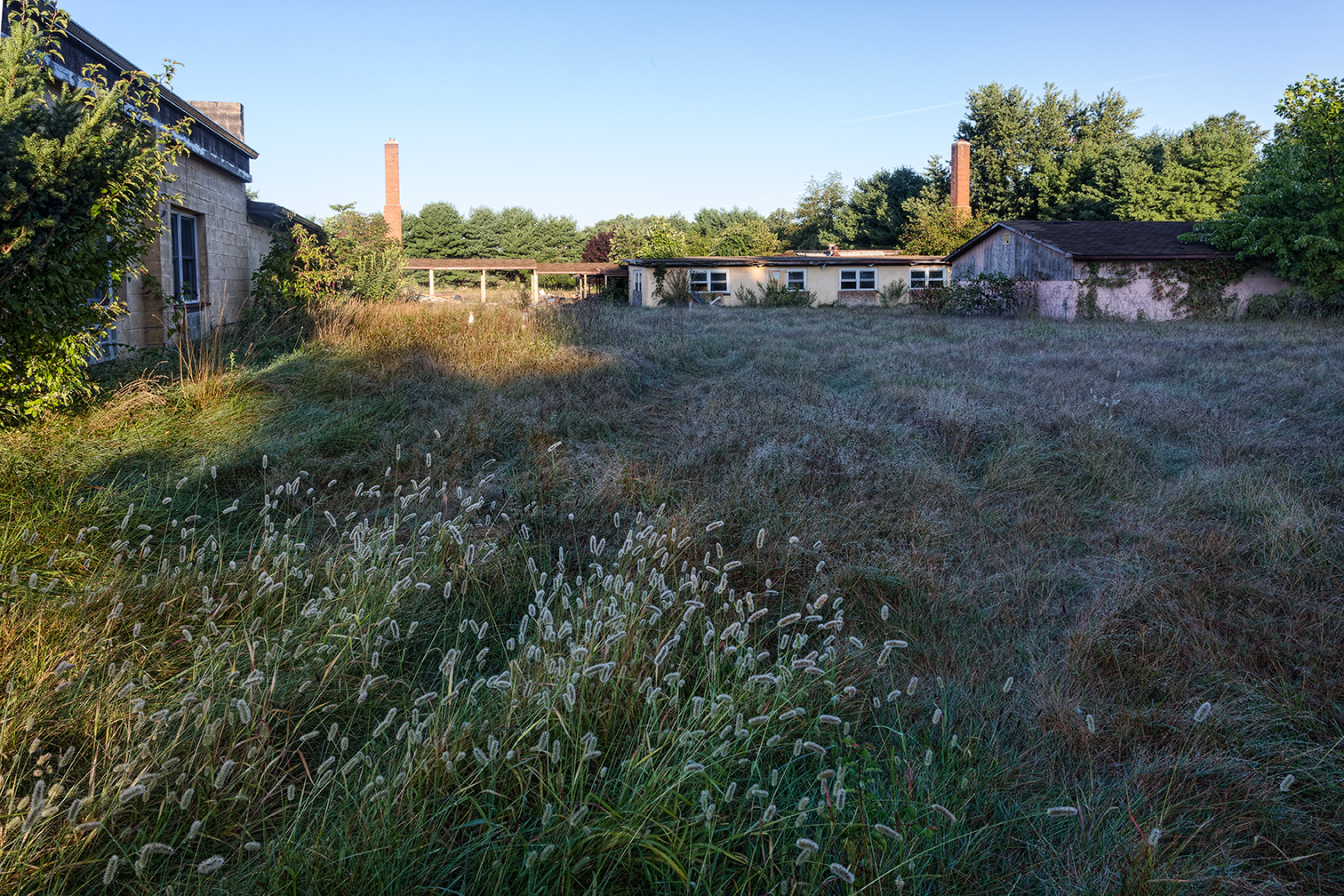
PH23/25 Barracks and Administrative Area by Richard Lewis 2015
Nike Missile Battery Interior Spaces
Many of the building interiors had undergone some restoration over the years. The property was used for various purposes from a school to storage space. The only room I found that looked unchanged from its original military use is the last image in this group.
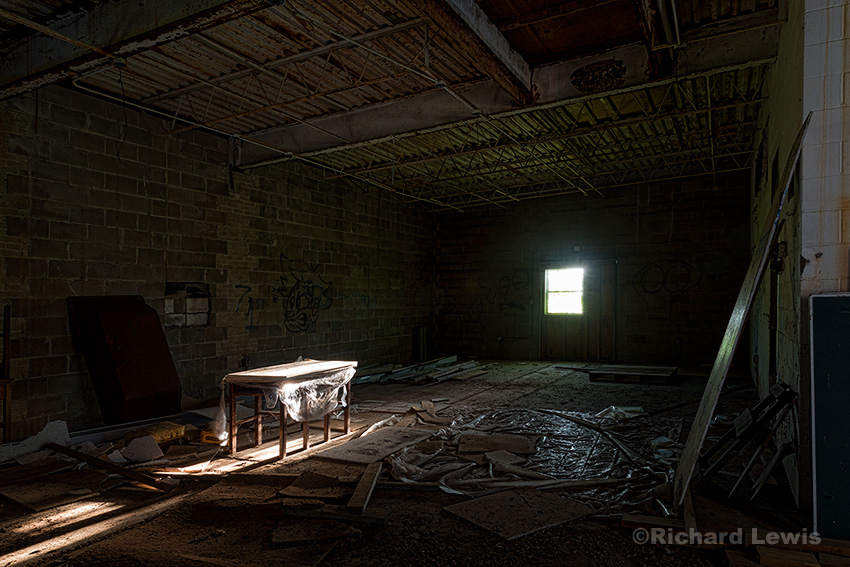
Nike Missile Battery Interior Space by Richard Lewis 2015
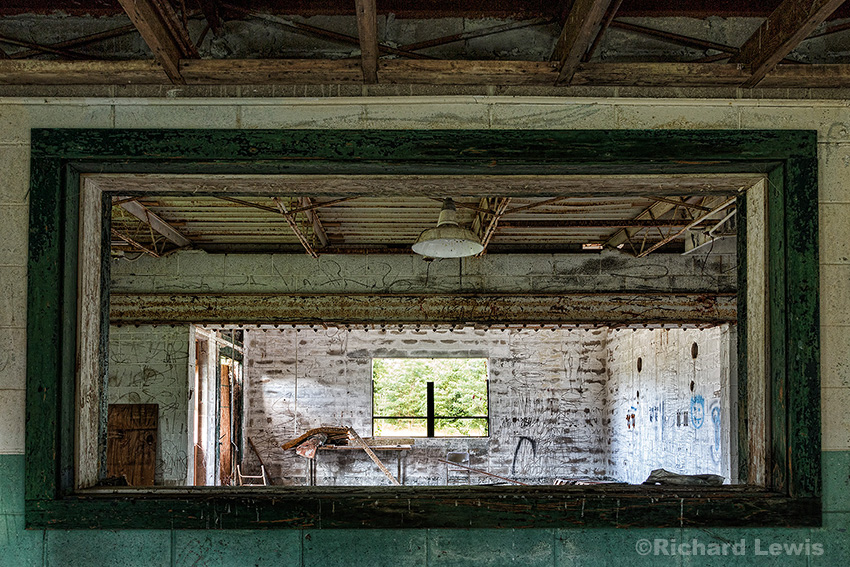
Nike Missile Base Old Workshop by Richard Lewis 2015
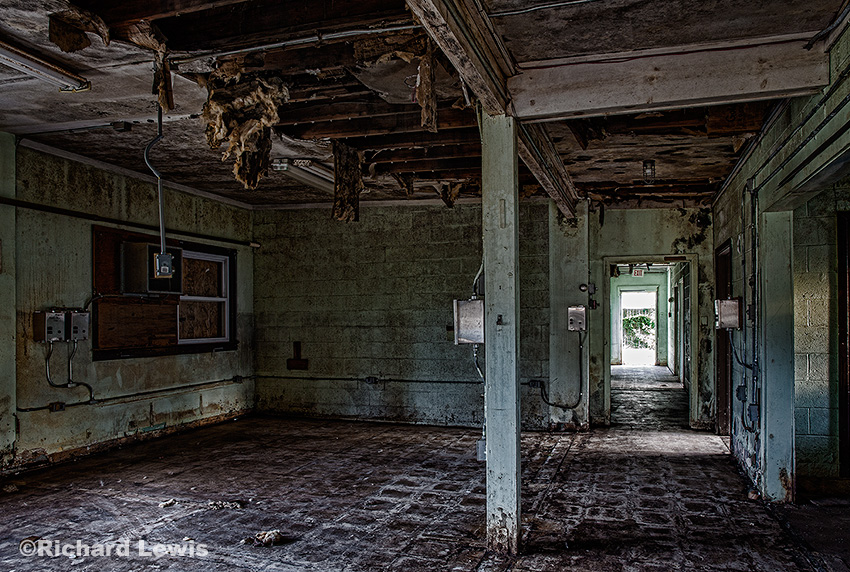
Nike Missile Battery Administrative or Barracks Interior by Richard Lewis 2015
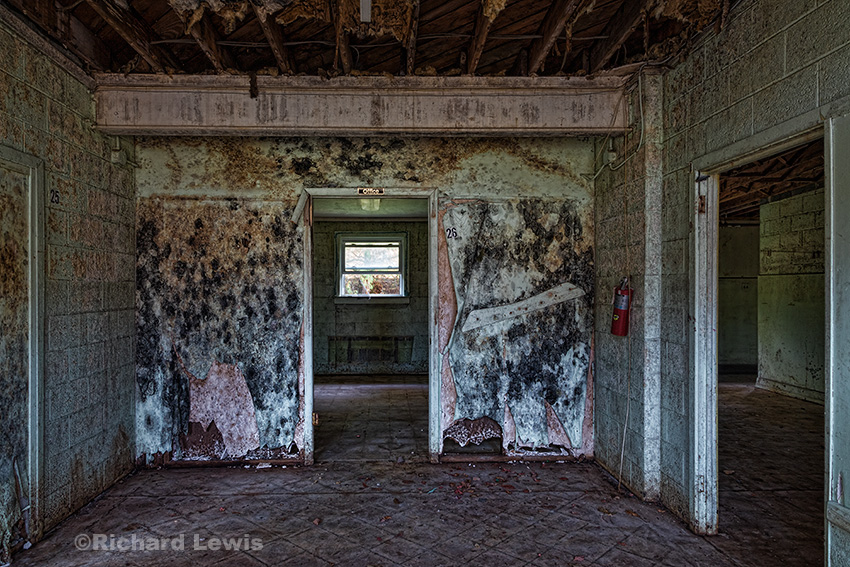
The Office Nike Battery PH23/25 by Richard Lewis

Nike Missile Battery Became A School by Richard Lewis 2015
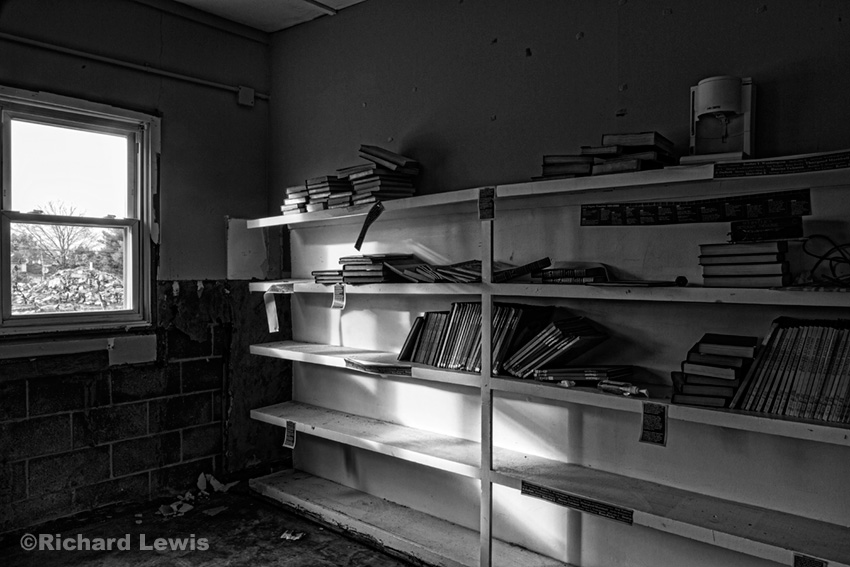
School Library by Richard Lewis 2015
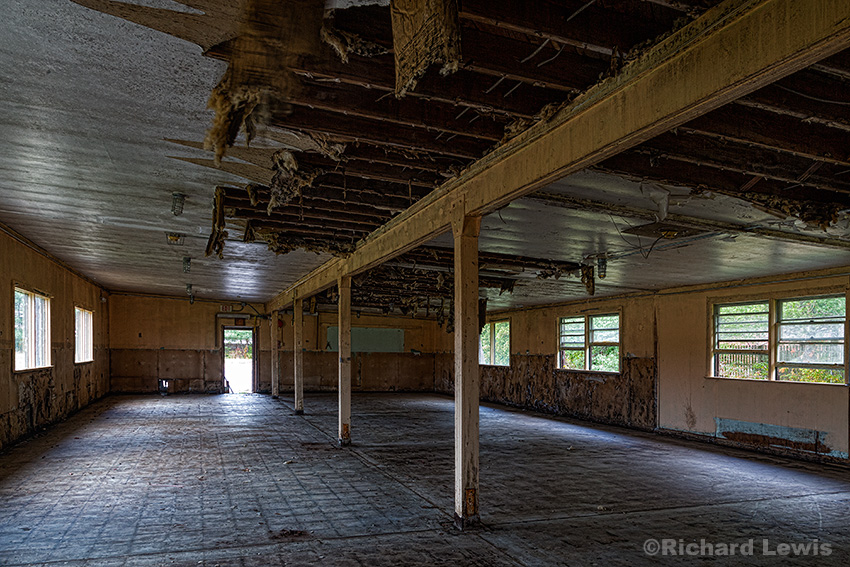
Nike Missile Battery Administration/Barracks Interior by Richard Lewis 2015
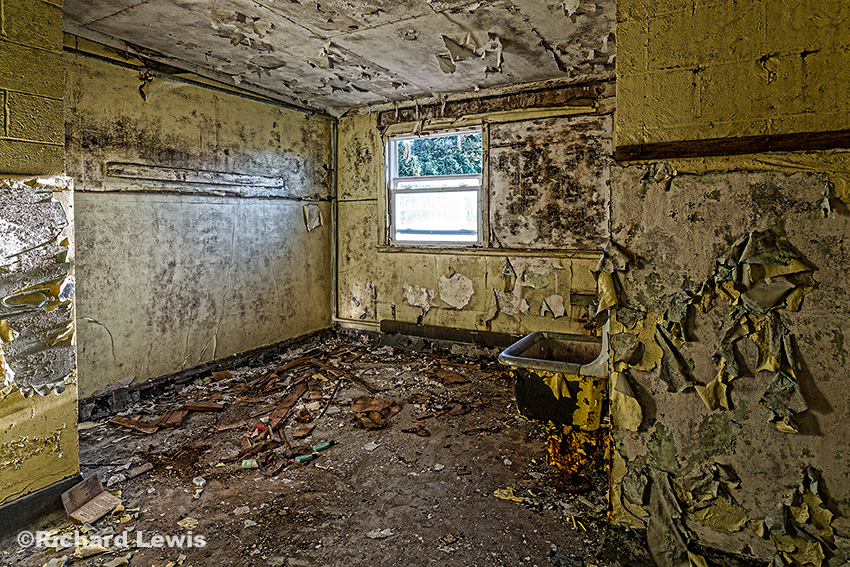
Nike Missile Base Interior Room by Richard Lewis 2015
Demolition of Nike Missile Battery PH23/25
On one of my last trips to the base I got to see the demolition in progress. Now all that is left of PH23/25 are some military records and these and maybe a few other photographs. I feel a huge sense of responsibility knowing that my photographs are probably the only extensive visual record of an important place that no longer exists.

Demolition of Nike Missile Battery PH23/25 by Richard Lewis

Nike Battery PH23/25 Administration Building by Richard Lewis 2015
Honoring Our Original High Technology Warriors
What do I hope to accomplish with these images? My goal is to preserve the memory of the Cold War relic artistically. This particular missile battery is important because it has a place in my history as well as local and even national history. The missile men of the 1950’s and 60’s may not have been front line soldiers racking up medals and war stories, but they did earn an honored place in history. They were some of the original high-tech soldiers defending our nation with new and unproven technology at a time when military destructive capabilities rose to a global level.
US Army photographs from the 1950’s: (left) Nike missile battery crew from Sandy Hook, NJ, (center) Nike Ajax missiles, (right) Army Air Defense Command shoulder patch.
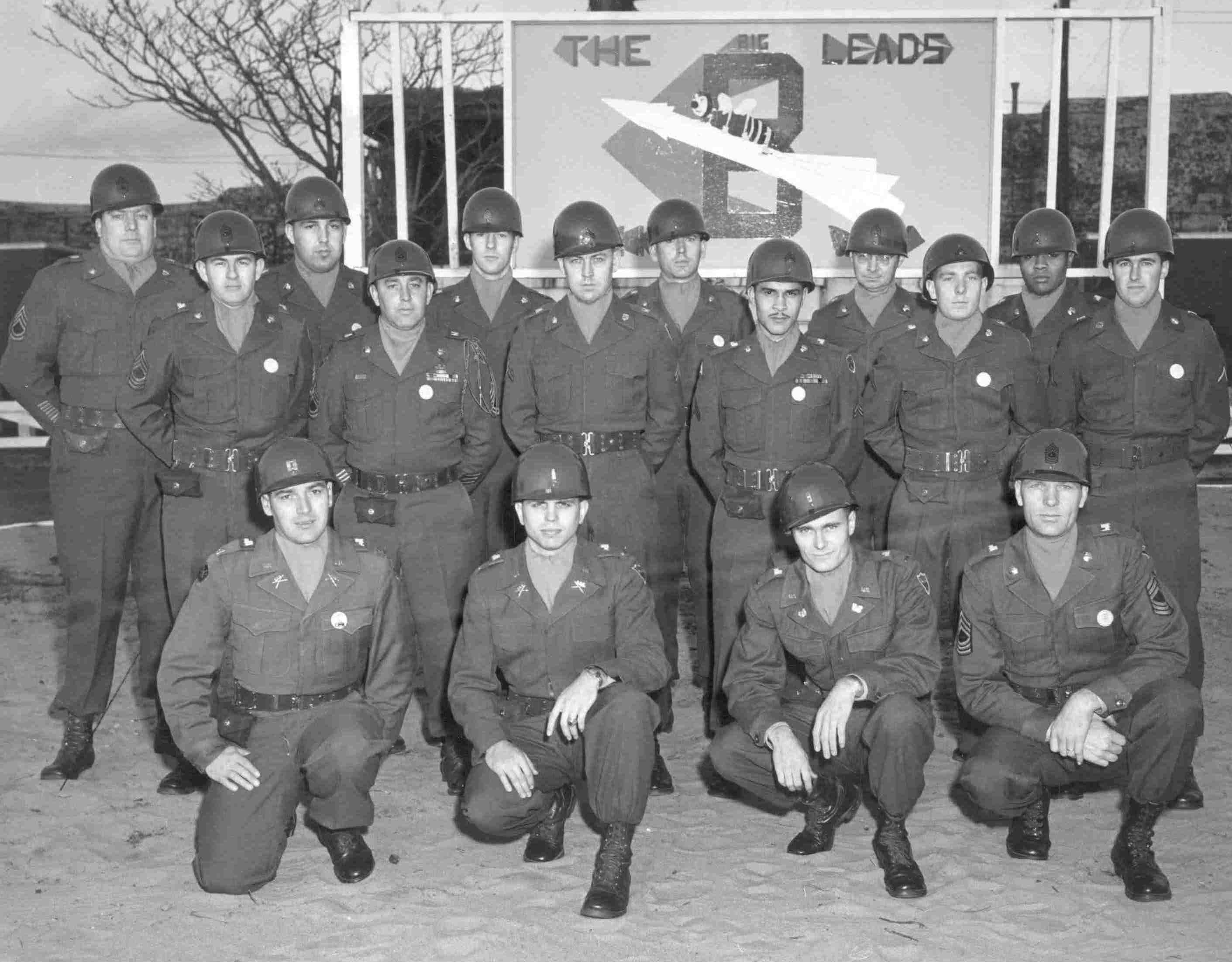
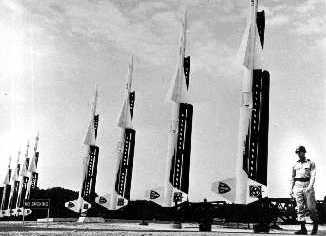
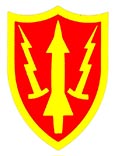
See more images of Nike Missile Battery PHL23/25in the Abandonment Gallery on my website
Enjoy
*Reference: Lumberton’s Cold War Legacy by Donald E. Bender

What a fascinating place. I’m glad you were able to make a visual record of it prior to it being demolished. I’ve visited a couple of Cold War bunkers in Britain that were disguised, at above ground level, as farmhouses. It’s a fascinating era of recent history and it would be nice if more of it was preserved to help future generations understand.
Thanks Laura. I agree with you about preserving these. There is one preserved in Sandy Hook, NJ. This missile battery had been a local eyesore for so long I think the locals were happy to see it go. Many that did not grow up during that period don’t realize that we were so close to nuclear annihilation that our cities had to be ringed with missiles to defend them.
Thanks for all this info & the beautiful pictures. I think you are very brave to go inside this building!
Sent from Ina’s iPad. Desire sets our compass, real life steers our course.
>
You are very welcome Ina. This became kind of a mission for me to preserve the fact that missile bases defending American cities were necessary. You lose sight of just how bad things could have been if we had a war in the 50’s or 60’s. These buildings weren’t too bad. They were in great shape compared to others I’ve gone into.
An excellent theme well treated, Rich
Thanks Derrick. I appreciate your comments as always. I hope all is well with you.
I lived in Lumberton as a kid for many years. FL Walther class of 76. Rode by the “Nike Base” as we called it on my bike or cycle many times. It became part of the landscape and after a while I didn’t give it a second thought. Thank you for the photographic detail and history lesson. Dave Wright
Hi Dave and thanks for sharing your story here. I think we all got used to that base just being there. When I heard it was coming down that was the motivation to finally photograph it and learn more about its history and purpose.
I drove past this place many times, took a few terrible pictures through the fence. You did a much better job. Great shots! 🙂
Rich the Explorer. Keep up the good work!
Thanks Pat! I will try to keep it up. Having your work as an inspiration is a great help.
Reblogged this on South Jersey Trails and commented:
I don’t reblog often, but a buddy sent this to me today, and it’s really awesome. Drove by here a bunch of times and even snapped some pictures from outside the fence, but these do an amazing job of capturing the last remains of a passed moment in South Jersey history…
Thanks for the reblog, I really appreciate along with your nice comments here. I agree that we lost a great piece of history when this Nike base was demolished. Progress is progress so I’m happy I was able to do something to preserve this place. By the way, anyone reading this should check out this guy’s blog. It is a great record of the many hiking and walking trails in South Jersey.
Thanks for the great pictures Richard, especially the drone view. I’m a former Nike missile IFC guy (Tolchester Beach, MD D battery, 4th Missile Battalion, !st Artillery) living a couple of miles from the Lumberton Nike site who drives by it almost everyday. It’s a bit sad to see it all gone now but I understand that it’s progress. At least we have the base at Sandy Hook saved. BTW, D-4-1 IFC area still exists (as a 4-H facility), but the Launcher Area has been allowed to rot away.
Thanks Billy for your comment and for your service. I would love to talk with you sometime about your experience with as an IFC guy. Throughout this project I often wondered what is was like to serve on one of these batteries. I tried to find some records and photos of the PH23/25 while it was active but came up empty. It is good that we have Sandy Hook. I think soon it will be the only one left. I had heard about D-4-1 and have looked at Google Earth images of it. I may be tempted to head down there sometime soon to see it.
Some time ago, I was researching the BOMARC site and found a wealth of information in the NJ Room at the library in Westampton. I can’t help but wonder if there may be information about PH 23/25, as well?!!
Very interesting and impressive photography. I’ve lived near this site for years and have often wondered what it looked like inside. Really glad you got inside and were willing to share with us. It’s was a fascinating period of history for our country. I was too young to understand the political machinations of the Cold War but well remember the “duck and cover” drills in school and all the civil defense preparedness in our basement.
Thanks for your comment Bob and I’m happy to share this piece of local history. It was a very fascinating and scary time. I also remember “duck and cover” drills and being mad at my father for not building a bomb shelter in the backyard. We did have distilled water and a supply of canned goods in the basement. It’s good we never had to use that stuff, or the missiles on that base.
We grew up right next door to this Nikey site , my brothers and I have so many stories about the Army Base, we have so many memories. Ken
Thanks for your comment Ken. I’d love to hear some of those stories sometime.
I grew up not too far from Lumberton and never knew this was here. Can you provide the location? Fantastic pic, btw. Nice job.
Thanks Michael. To answer your question, the radar towers, fire control area and administration were on corner of Eayrestown Road and Municipal Drive. There are still a couple of old radar towers on the opposite side of the street that are on the property of a landscaping company. The launch area was further down Municipal Drive just outside of Lumberton where the public works area is.
Nice, thanks for sharing! Our configuration was different in Europe, but still our Nike Hercules. My Team supported the Belgian Air Force as part of NATO. We supervised the assembly and the entire site, until we had to retofit the warhead with nukes, then we Americans could only work with the warheads. It was great duty, in Germany, but 50k’s from the Begian border. Most Germans didn’t know we were on the outskirts of town. There were about 5 of us assembly and maintenance guys, and several squads of infantry. The Begians maintained the non nukes. 43rd Artillery, Team C in Euskirchen.
Thanks for your comment and your service Bob. I also appreciate you sharing your story. I knew there were Nike batteries in Europe but wasn’t aware the that the configuration would be different. Of all that I learned about the battery in Lumberton, the most surprising thing is that here were nuclear surface to air missiles just outside of town. It’s a good thing they were never needed.
I was stationed there from 1960 til 1962 headquarters building in the back slept in barracks in the middle building
Thanks for your comment. I would love to talk to you sometime about your experiences there.
This is Awesome!! I never knew this or I forgot about it!! Thank you!!!
Thank you Sherrie. I appreciate your comment. The reason I did this project was so we don’t forget that it was there, or the reason it was built.
Did they tear down the fence? I remember it as being surrounded by a barbed wire fence. We used to go to see it because, well, we were kids.
Marianne, it was surrounded by a fence which is partially still there, although nothing is on the site anymore. It is just a field now.
Thank you for writing this I pass by often and I have always wondered what the story was.
You are very welcome Dawn. Thanks for your comment. My goal here is to help share the story of this place. It was an interesting time in our history.
Thank you for your artistic preservation of the Nike Base, Richard. My brother worked there in the late 60s. I was sad to see it demolished, always hoping it would be preserved. The photos are fantastic. Well done~
You are very welcome Vickie. I appreciate your comment and your compliment very much. I would love to meet your brother sometime as it would be great to get a first hand account of this Nike missile.
This also used to be s school in the 1990 till at least 20000 this place was used as a school called midway. It was for kids with learning disorders
Thanks for your comment and sharing the information about the school Ricky. I remember when it was the Midway school. You can even see evidence of it in some of the photos.
In the mid seventies, the barracks and administrative buildings of the side were acquired by the Association for Children with Learning Disabilities, and Midway School came to be. ACLD and Midway School were formed by my mother Julia Air with the help of her husband Robert. I myself did work on the site throughout the years, including the building of the school library shown in the photos above.
Thanks for your comment and for telling a little about Midway School. It’s is also nice to hear from the person who built that library. That was the last discovery I made there. I don’t know how I missed it previously. That photograph was made the weekend before that building was demolished.
Is this the Richard Lewis I know from the Burlington City Rotary Club, and owns the print shop on High Street? Great article and photos!
Hmm, my comment came up as ampedonsolar, my company! This is Kristan Marter
I remember when i was a kid , 1 of the radar towers , maybe 2 of them were still there . I always thought it looked like a giant golf ball . I also used to explore the Marlton nike base with my buddy …. that 1 is completely gone and a development now
Thanks for your comment Ron. I appreciate you sharing your experiences as a kid. We moved to the area in 1984 and all the radar towers were gone there, just the bases and we always thought they were missile silos. I know about the Marlton base. That one has been gone for a long time.
I recently commented about PH23/25 in Lumberton, that was also Midway School in one of its later incarnations. I looked at your site, including the abandoned homes. You might consider photographing another site that was used by ACLD back in the late 70’s through the late 90’s. It was known as Camp Melpine.
Thanks for the tip Michael. I appreciate you sharing it. I hope you don’t mind my editing out the specific location of Camp Melphine. This is a public blog and I cannot control who reads the posts. Those of us who photograph abandoned homes tend to keep the locations quiet in order to protect them from vandals or others who may injure themselves in unstable structures.
Not at all – seems reasonable.
I would love to go over the site with a Geiger counter, I’m sure there’s a lot of radioactivity that the government wants to forget about.
Great photojournalism !
Thanks Lou, although I wonder if these meet photojournalism standards. I also wondered about the radiation. I believe there was one reported accident at another site in the whole history of the program. I’ve also had contact with some of the veterans who served on these batteries and they all seem healthy.
Interesting article by WSJ Waste Lands America’s forgotten nuclear legacy. http://projects.wsj.com/waste-lands/
WOW… who knew!?! I passed that place so many times. Someone once told me it was a place where firefighters practiced and I just believed them. The interior shots are a nice surprise. Great job on a very thorough and valuable record, now that it is all gone.
I’m not sure who told me that this was a missile site but I learned about it not long after we moved to NJ. I always thought it was fascinating that a Nike missile base was located right in Lumberton. Since I started this project I have learned so much more about the actual purpose of this base. We grew up in a scary time when you think of it. There were nuclear missiles, ready for use, all over South Jersey to defend Philadelphia against an attack.
Thanks for posting these images. Very interesting. Isn’t there one still standing on pemberton rd and 206? I also heard there were nikes across the street from Indian springs Golf club. What does the word Nike stand for?
Thanks Amy. I appreciate your comment. There was a base near the Country Club but it is now the housing development across from Cherokee. I’m not sure about Pemberton Rd and 206. I have not seen anything and have not found anything about a site there in my research. Nike is the Greek goddess of victory. Great name for a missile and a running shoe right?
A little late commenting, Rich, but this is a good piece of work … a service to historians and nicely done.
Thanks Ralph. This definitely is one of the more fascinating subjects that I’ve done. The response has been pretty remarkable too.
Whoa… this place was always there on my way through Lumberton and never really knew its story. Thanks for bringing to life once more. Your willingness to go the extra mile (paragraph) really gives this post depth and the documentation and creativity in shooting it brings it full circle.
Wonderful Photographs & article Rich…. There’s still a fairly complete one on the main road through Fort Dix…where the accident was. Getting on to it without an Army uniform on is probably not such a good idea since it’s restricted..:(
Keep up the good work…
I know where that site is. They weren’t Nike missiles but another type. I might try to get permission to go there but remember it may be a contaminated with radiation from the accident so that might not happen.
I was stationed at headquarters nike missile site in merchantsville,nj. Any information would be appreciated. Thanks.
Great photos Richard. In 1974 as a young man I participated in CD drills and Radio amateur civil emergency services exercises on one of the bases in South Jersey. I lived in Willingboro at the time and had a great time exploring the place just after it was decommissioned. I wish I still had photos to send you. Doc Russell, Charlotte NC.
Thank you for your comment and for sharing your memories, Doc. I would have loved to see photos of a Nike base right after it was decommissioned and before it fell into disrepair. It must have been fun exploring.
For myself I used to go to school there it was called Midway School. I also use to work at the school as well. Little did I know my grandfather was stationed at the Nike Base.
Thank you so much for your comment Diane. It’s amazing that both you and your grandfather were involved with this Nike missile base.
I was stationed at this Franklin Missile base from 1968-1969
It was turned over to the Army National Guard. I was one of the last regular Army soldiers to leave this base. I have no pictures of the Franklin Missile Base
Cameras were not permitted on Base. I am 76 and greatly appreciate all the pictures and information.
Ron
I grew up in Lumberton. I remember the shoe factory on the corner of Main & Landing St. 2 grocery stores, a bar, hotel, a gas station, a little closed store, the old fire house, an awning shop, a watch repair, plating and machine shop, flower shop, boat houses on the south end of town, shooting baskets on the 2nd floor of the town hall, riding my Cushman scooter down the railroad tracks, teen dances, jumping off the railroad bridge, and playing in the building site of the Nike Site when I was a kid. Different times.
Kudos on sharing history of the town. Charles R. Danter
NICE! Brings back old, old memories. I was Launching Specialist with D Battery 738th Nike Ajax at Fort Dix 1954-55. We scraped a launching area out of an old peach orchard about 5 miles from Fort Dix proper starting in June, 1954. This was before any of the permanent sites were constructed…we eventually ended up at PH-32 in Marlton, NJ.
I’m sure you are aware of the explosion and deaths of about 6 or 7 Nike troops at Lumberton in 1955…I believe there is a memorial marker still there. This happened in July, 1955 as I recall.
Thanks, Bruce Graydon Fort Collins, Colorado. biffgraydon@gmail.com
served A battery 3rd-4th ..clementon nj nike ajax from 56-58..unable to find any pictures of the launch site or ad bldg….
Brings back old memories. I was stationed at a Nike base for 3 years as a radar tech
Thanks for your comment and your service.
CSM Lum Harris (Ret)
I am an old (90yrs old) veteran of Arty Anti Arty (90mm), Nike-Ajax and Nike-Hercules missiles. I was station at the Lumberton Missile Base from Oct 63 till Sep 1969, as the Launching area Platoon Sergeant, also I was trained as a Elect Material Missile Chief, plus attended the Nuclear War Head mating school, held @ White Sands, NM. The site had 6 operational sections, 3 Hercules, 1 section in the launching area not in use and 2 old Nike-Ajax sections closed. Later we put the 4th Hercules section in operation. We maintained 24 hr guard duty with hours of darkness guard duty taken over by a dog and his handler around the fence of the launcher area. During Alpha status,(Ready To Fire), I was one of the Launcher Control Officers, with my duty station in the Launcher Control Trailer”. My time spent at the Lumberton base I was asgn as the Launcher Area Platoon Sergeant Battery A, 7th (Herc) Bn. 112th Arty, NJARNG. I as not there when the base was closed bu very once in a while I drive by and think about what we did there. I am still in contact with some of the old guys who stayed in the area. As a side note, before I was asgn to Lumberton, I was station at PH49, Pitman, NJ, a Nike-Ajax site,as the Platoon Sgt and Launcher Control Officer. We had a thing called SNAP (Short Notice Annual Practice). When this happen, the battery was called on a Thru and told we were order to Ft Bliss,TX.Selected individuals were on a plane Fri night, flying to Texas, reporting to McGregor Range, NM, evaluation conducted on IFC personnel, missile assembly personnel and the firing crew personnel. During my time attended 9 of these SNAP,S.
Hi, I stumbled on to your site and really enjoyed the photos and commentary. I was a Nike soldier myself, electronics maintenanceman (we built and tested the missiles) on the assembly crew in the launching area. I was stationed as a federal weapons custodian on a National Guard site in Pacifica, CA, and at A Battery and C Battery in the Anchorage, Alaska defense. I didn’t know there was so many sites in south Jersey, when the weather gets better, I hope to do some exploring. There is a site in the National Recreation Area in the hills just north of San Francicso that has tours available, the launcher control trailer is open and operational. The elevator works in the exclusion area and they take you down in the magazine where there are still training missiles, thanks again, John Preston
Hi I live right next to it, so if I were to go explore it would I get in any trouble?
This site is petty much demolished. The only structures that are still there are on private or municipal property.
I loved the photos of the Lumberton missile, i was stationed there from 1969 until 74 when it was decommissioned. I personally spent time in every one of those buildings, and could tell you how many times i was up on those concrete towers servicing the radar units.
Thanks for the memories,
Thomas Clark
MTR operator
This comment is from Clyde who served at this site. I just ran across the Lumberton Nike site article. To me it was Battery C 3rd Btn. 43rd Art. I arrived there in the spring of 1962. Our’s were Nike Hercules (Herks) and across the street from HQ and the radar and command section there was part of an abandoned Nike Ajax site. There was a rumor we guys at the launch area liked to tell the new cooks. So it went the two sites should have been arranged with the launch area to the east of the radar area. Because the missiles were aimed at the coast and they would otherwise have to pass directly over the radar and as rumor had it, making the mess hall the booster disposal area. Thus the new cooks and K P workers were told they must man their station even while under attack. By the way there were few if any in the area that knew one of the five missiles in each of the three sections was a nuke and we were sworn under threat of imprisonment not to discuss anything about the base with the public.
I served at Lumberton from 1969-1970 as NCOIC radar repair. Due to security clearance; never had a mess hall. Loved the area; hated the drive to the southern sites for support and being assigned to the Phila Naval base for all medical needs. I did enjoy being surrounded by corn fields and watching the young lady driving the tractor!
.